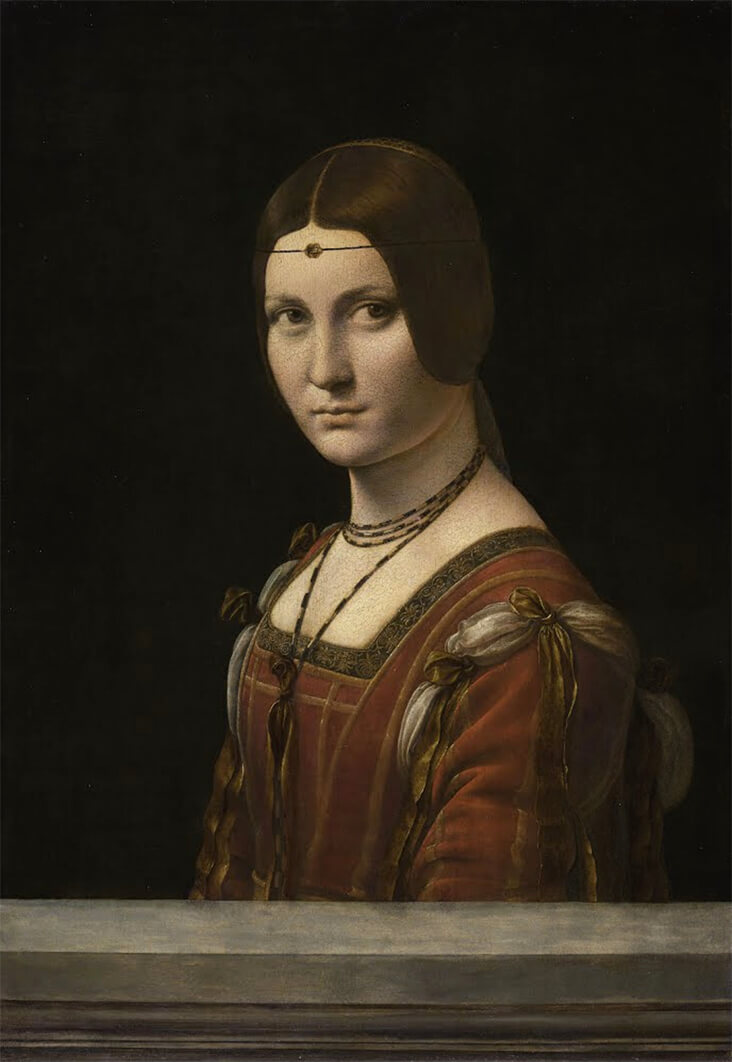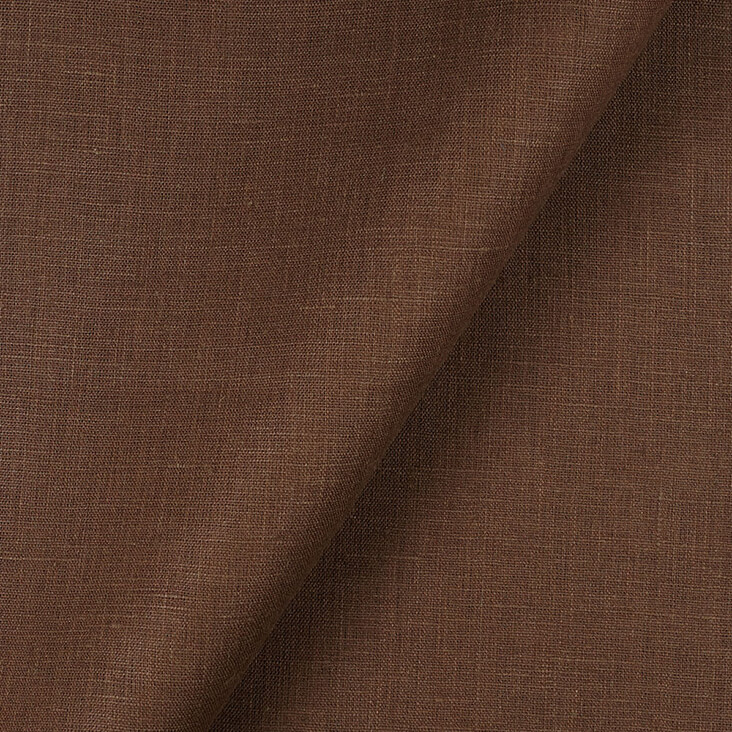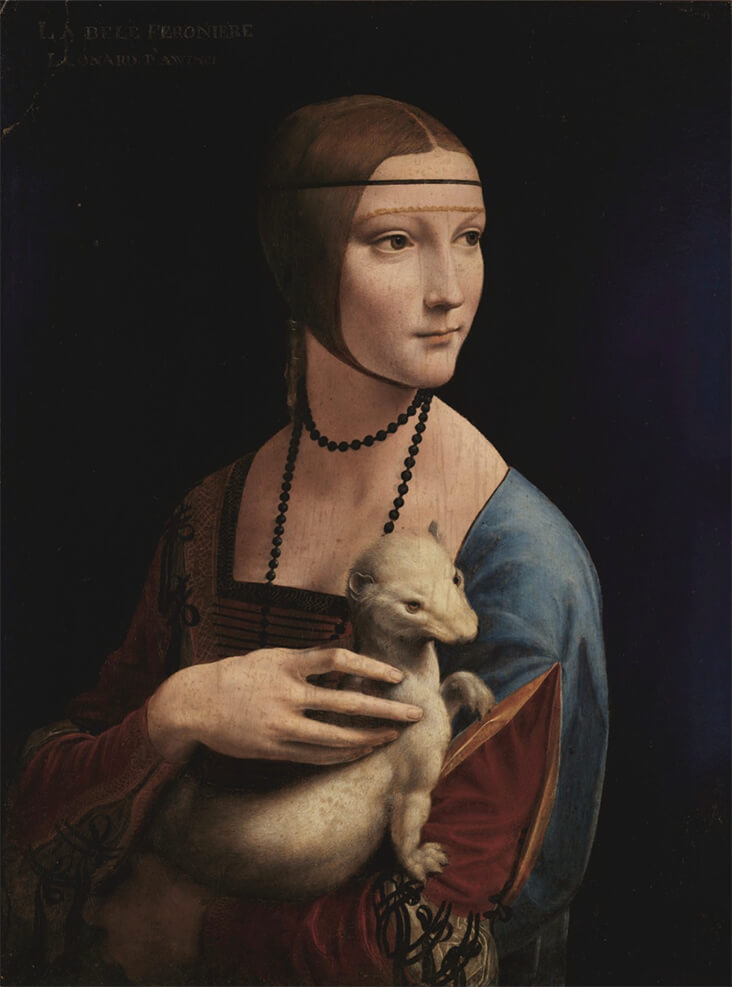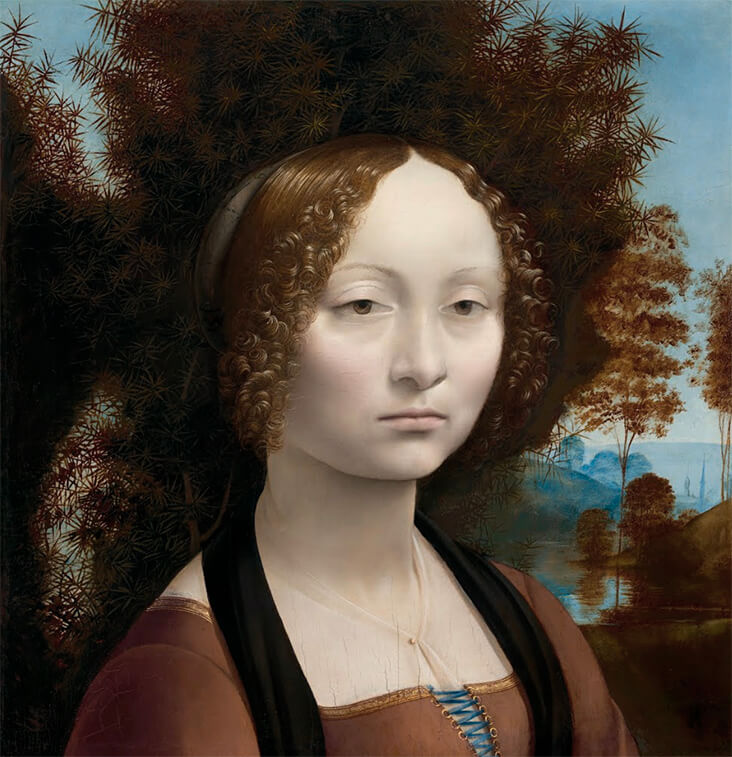FS Colour Series: Potting Soil inspired by Leonardo da Vinci’s Subtle Mystery

Portrait of an unknown woman, incorrectly known as “La belle Ferronniere” /Leonardo da Vinci / 15th Century
One of the most famous artists of all time, Leonardo da Vinci’s art is filled with subtle, mysterious shades of brown like that of POTTING SOIL Linen, proving how entrancing this unassuming colour can be. From undulating landscapes to the tinge of angel’s wing tips, golden browns bring depth and weight into his quiet, mystical scenes, investing in them a softly muffled warmth that conveys the vastly complex, weighty depths of human feeling. Reflecting on his innate ability to see, and thereby convey such a vast range of subtle mood shifts, he wrote, “The artist sees what others only catch a glimpse of.”
Leonardo da Vinci was born in 1452 near the Tuscan town of Vinci, an illegitimate child to a local lawyer. Precociously talented from an early age, he became an apprentice to the much-celebrated early Renaissance painter and sculptor Andrea del Verrocchio in Florence. While studying under Verrocchio, da Vinci painted one of his earliest masterpieces, The Annunciation, 1472-75. Earthy shades of green, red and blue dominate the foreground, while a strip of rich, chocolatey brown runs across the horizon and into the wings of the Archangel Gabriel, lending glowing embers of warm radiance to the whole scene.
Leonardo established his own Florentine studio in 1478. Several years later, in around 1483, he moved to Milan to work for the wealthy and powerful Sforza family as an engineer, painter, sculptor and architect, revealing the great depth and breadth of his inventive talent. While living in Milan, he made one of his most studied paintings of all time, the sensitively observed and quietly brewing portrait The Lady with the Ermine, 1485. The subject of the work is the young Cecelia Gallerani, mistress of Ludovico Sforza, Duke of Milan. Her elegant, pale beauty emerges from a dramatically dark backdrop, while flashes of brilliant blue and red slash open the foreground of the painting. Encircling her head, her hair is captured with glowing brown radiance, glinting in the sunlight at the top of the canvas before falling into shadow that tucks gently under her chin with a graceful, feminine curve.
Leonardo left Milan in 1499 following an invasion by French soldiers, visiting Venice briefly before returning to live in Florence. There he painted the richly evocative work The Virgin and Child with Saint Anne, 1503, as a commission for the high altarpiece of the Church of Santissima Annunziata in Florence. This painting demonstrates da Vinci’s mastery of the sfumato technique, as edges are blurred into an indistinct, ghostly haze, while the three closely placed figures almost blend together into one living, breathing entity. Soft, quiet shades of sienna brown form a haze across the foreground, pouring over craggy, broken rocks and weaving in and out of a soft Italian light, lending the entire landscape the earthy, human warmth of familial love.
In the later portrait of a man from the Uffizi collection, which many have assumed to be Leonardo himself, browns dominate the entire scene, filling it with rich, velvety darkness. Skilful sfumato blending allows soft, honeyed light to fall over the man’s face, falling into deeper golden shades of brown around his eyes, nose and mouth, lending him a quietly cerebral aura. Even the darkest shadows that fall over his hat and into the background are brown, rather than black, retaining the soft, slowly unravelling mystery that is unique to Leonardo, and has fascinated so many of us for centuries. “Simplicity”, he argued, “is the ultimate sophistication.”







































4 Comments
Vicki Lang
What a man of mystery was Leonardo da Vinci. Thank you so much for the wonderful article.
Rosie Lesso
Thank you!
Gwendolyn Loehr
Thank You, Rosie for the time you take to write your articles on artists past and current and your interviews with talented artists on what inspires them. I really appreciate the time and effort you put into it creatively inspiring us with the color on sale and how it relates to art. Bravo Rosie!!
Someone should interview You! I’d love to see your work!
Thank you so very much,
Gwen Loehr
Rosie Lesso
Thank you so much for the lovely feedback – I’m really glad to hear you are enjoying the articles!